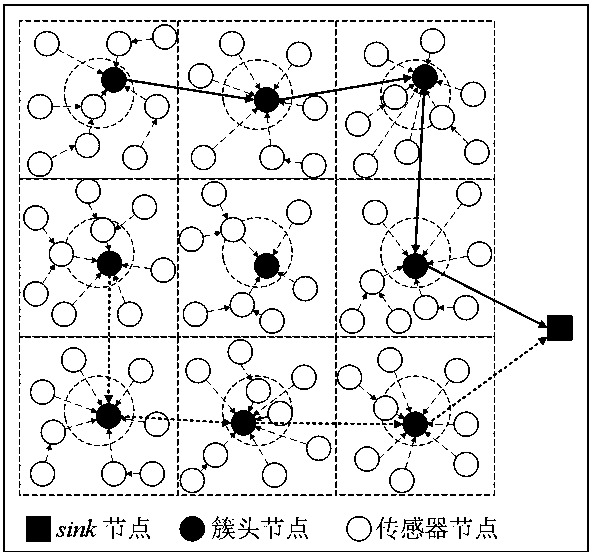Wireless sensor network data aggregation algorithm
A wireless sensor and network data technology, applied in the field of communication, achieves the effect of high reconstruction quality, less number of packets sent, reduced number of packets sent and energy consumption of nodes
- Summary
- Abstract
- Description
- Claims
- Application Information
AI Technical Summary
Problems solved by technology
Method used
Image
Examples
Embodiment Construction
[0043] A data aggregation algorithm for wireless sensor networks. The algorithm is composed of a space-time clustering algorithm and an adaptive energy-aware neighbor-assisted projection regeneration coding method. The space-time clustering algorithm is used to construct a clustered network structure, and the adaptive energy-aware neighbor-assisted projection regeneration coding method The method is used for temporal and spatial linear projection, spatial regeneration transmission and inter-cluster projection regeneration data fusion for each sensor node data.
[0044] The space-time clustering algorithm adopts the free space communication method, analyzes the energy consumption of network nodes based on the WSN monitoring area, the number of nodes deployed, and the sparsity of the projection coding kernel, determines the optimal number of clusters, and builds a space-time joint clustering network structure; The spatio-temporal clustering algorithm constructs a more balanced nu...
PUM
 Login to View More
Login to View More Abstract
Description
Claims
Application Information
 Login to View More
Login to View More - R&D
- Intellectual Property
- Life Sciences
- Materials
- Tech Scout
- Unparalleled Data Quality
- Higher Quality Content
- 60% Fewer Hallucinations
Browse by: Latest US Patents, China's latest patents, Technical Efficacy Thesaurus, Application Domain, Technology Topic, Popular Technical Reports.
© 2025 PatSnap. All rights reserved.Legal|Privacy policy|Modern Slavery Act Transparency Statement|Sitemap|About US| Contact US: help@patsnap.com



